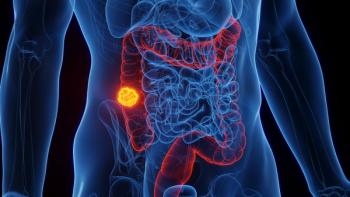
A Single CRISPR Treatment Could Replace a Lifetime of Daily Treatment in Hereditary Angioedema
In a phase 2 trial, a gene therapy reduced angioedema attacks, which could significantly change the quality of life for patients with hereditary angioedema.
Patients with hereditary angioedema (HAE) may be able to replace their daily medication with a single treatment of a CRISPR-Cas9-based gene editing therapy, NTLA-2002.
In a new phase 2 study
"This reduction is perhaps the most crucial as it shows us that the therapy is working,” Hilary Longhurst, M.B.B.S., Ph.D., senior medical officer of the Auckland District Health Board and an honorary senior lecturer at the University of Auckland in New Zealand,
NTLA-2002 is administered intravenously and is designed to edit the gene encoding kallikrein B1 to reduce total plasma kallikrein protein level. Patients were assigned in a randomized fashion in a 2:2:1 ratio to receive a single dose of 25 mg NTLA-2002 (10 patients), a 50 mg dose (11 patients) or placebo (six patients). The study included a primary observation period in the first 16 weeks after infusion followed by a long-term observation period of 88 weeks.
At the data cutoff date, the median follow-up time was 8.2 months in the 25-mg group, 5.6 months in the 50-mg group and 6.9 months in the placebo group. At baseline, the mean monthly attack rate was 3.6 in the NTLA-2002 groups and 3.7 in the placebo group. During the primary observation period, the estimated mean monthly attack rate was 0.70 in the 25-mg group, 0.65 in the 50-mg group and 2.82 in the placebo group. The mean percent change in the monthly attack rate from baseline through week 16 was –78% for 25 mg, –79.5% for 50 mg and –16.3% mg for placebo.
There were four patients receiving the 25 mg dose and eight patients receiving 50 mg who were attack-free and had received no other treatments in the primary observation period. In comparison, none of the patients receiving placebo were attack-free.
The most common adverse events for patients receiving NTLA-2002 were headache, fatigue and nasopharyngitis.
The researchers noted that the small sample size in the trial, the short duration of follow-up and the short length of the primary observation period as limitations of the study. They also wrote that the race and ethnicity of the trial population does not reflect the groups affected by HAE generally.
"For many decades, patients with HAE were faced with a very limited number of treatment options to control angioedema attacks,” Danny Cohn, Ph.D., M.D., internist at Amsterdam University Medical Center, said in a statement. “The prospect of a potential, functional cure following a single-time treatment is overwhelming both for patients and physicians.”
Newsletter
Get the latest industry news, event updates, and more from Managed healthcare Executive.






















































